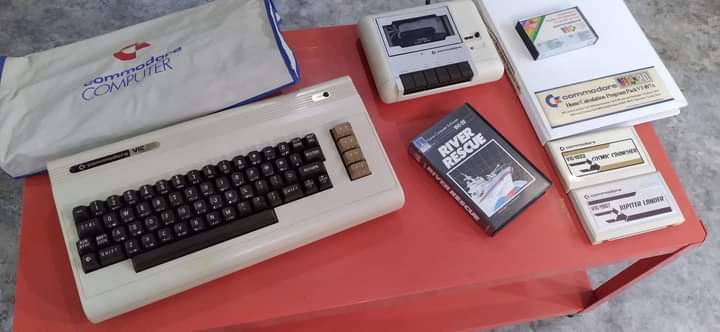Commodore Vic 20 (1982-1985)
The VIC-20 (known as the VC-20 in Germany and the VIC-1001 in Japan) is an 8-bit home computer produced by Commodore Business Machines. It was initially released in Japan in 1980 as a trial, and later made its way to the U.S. and Europe in 1981. This computer played a significant role in the development of personal computing. Here are some key details about the VIC-20:
- History: The VIC-20 was announced roughly three years after Commodore’s first personal computer, the PET. It was the first computer of any description to sell over one million units. Its affordability and accessibility helped make home computing more widespread.
- Specifications:
- CPU: It used the MOS Technology 6502 processor running at 1.108 MHz (PAL) or 1.02 MHz (NTSC).
- Memory: The VIC-20 had 20 KB ROM and 5 KB RAM (expandable to 32 KB). The BASIC programming language occupied 3.5 KB (expandable to 27.5 KB).
- Storage: It supported compact cassette and floppy disk storage.
- Display: The VIC-20 connected to a Commodore 1701 monitor, offering a resolution of 176 x 184 with a 16-color composite palette.
- Graphics: It featured graphics capabilities powered by the MOS Technology VIC chip.
- Sound: The VIC-20 had 3 square channels and 1 noise channel for sound.
- Input: Users could interact with the VIC-20 using tape, floppy disk, and cartridges.
- Successor: The VIC-20 paved the way for the popular Commodore 64 and the lesser-known MAX Machine.
We offer Daily and Weekly rentals on our Vic20 which includes the data.
